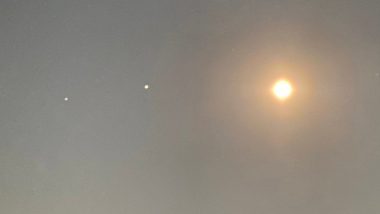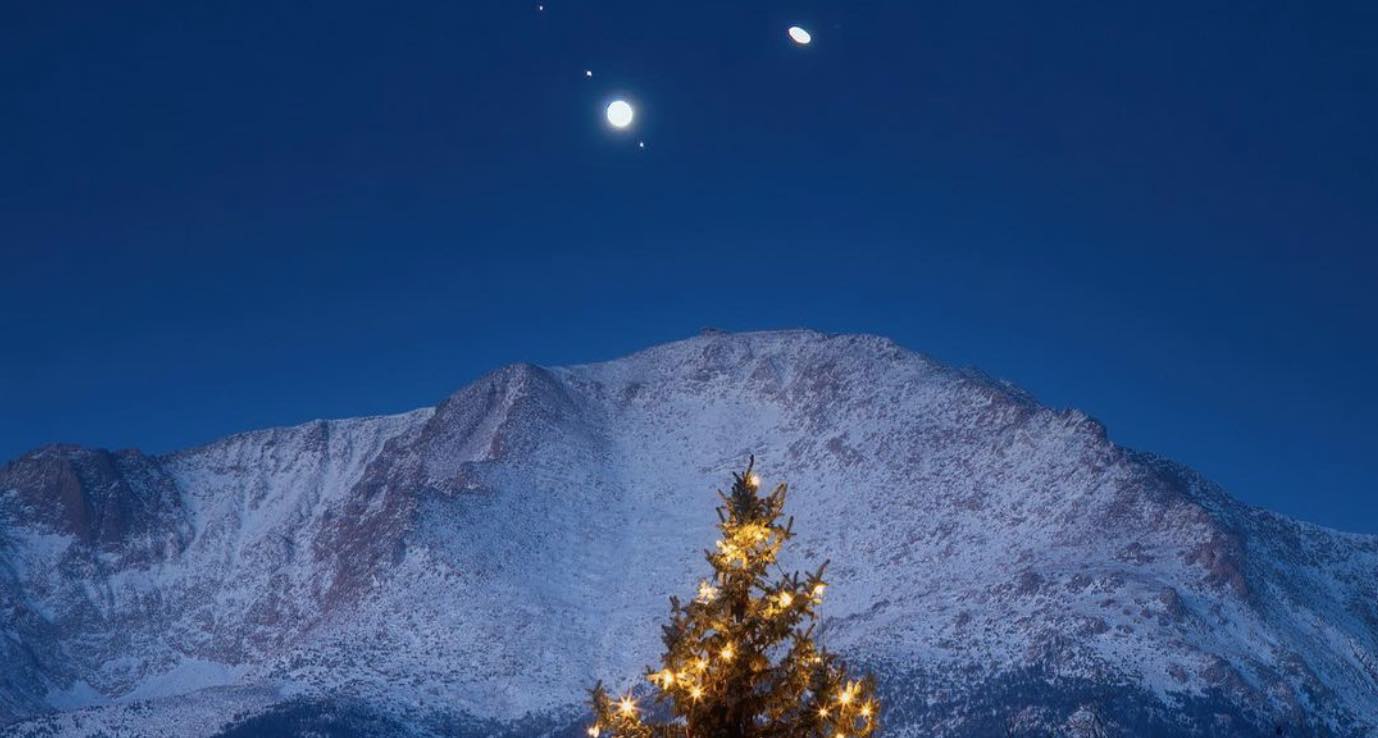Jupiter is larger in size and has more mass than Saturn. Saturn has prominent rings around it.
Jupiter and Saturn are two of the most iconic planets in our solar system, each with its own unique characteristics and mysteries waiting to be explored. Jupiter, known for its immense size, powerful magnetic field, and iconic Great Red Spot, is often referred to as the “king” of the planets.
On the other hand, Saturn is famous for its stunning ring system, composed of ice and rock particles orbiting the planet in a mesmerizing display. Both planets have a diverse range of moons and provide valuable insights into the formation and evolution of our solar system. We will delve deeper into the distinct features of Jupiter and Saturn, comparing and contrasting these gas giants to uncover their fascinating secrets.
Size And Composition
Exploring the contrasting giants of the outer solar system, Jupiter and Saturn, reveals intriguing differences in their size and composition.
Diameter
Mass
Atmosphere
- Jupiter: Primarily composed of hydrogen and helium
- Saturn: Combination of hydrogen, helium, and traces of methane
Moons
Moons: Jupiter and Saturn are known for their vast collections of moons. Let’s dive into the fascinating world of these planetary companions.
Number
Jupiter is famous for having the most moons in our solar system, with over 79 discovered to date. In comparison, Saturn boasts a relatively impressive 82 moons.
Size And Diversity
The moons of Jupiter vary in size and composition, with the largest, Ganymede, being even bigger than Mercury. Saturn’s moons also exhibit diversity in size and features, with Titan standing out as the second-largest moon in our solar system.
Interesting Moons
- Io: Known for its volcanic activity
- Europa: Contains a subsurface ocean
- Ganymede: The largest moon in our solar system
- Callisto: Shows signs of ancient geology
- Titan: Boasts a thick atmosphere and methane lakes
Rings
Jupiter and Saturn, two of the most mesmerizing planets in our solar system, are known for their magnificent rings. These rings, made up of ice particles, dust, and debris, add to the allure and beauty of these giant gas giants. In this section, we will take a closer look at the composition, visibility, and structure of the rings of Jupiter and Saturn.
Composition
The composition of the rings of Jupiter and Saturn differs in terms of size and material. While Saturn’s rings are well-known for their spectacular beauty, Jupiter’s rings are faint and less prominent. Saturn’s rings are mainly composed of ice particles, ranging in size from tiny grains to larger boulders. On the other hand, Jupiter’s rings are primarily made up of fine dust and small rock particles, barely visible compared to the grandeur of Saturn’s rings.
Visibility
When it comes to visibility, Saturn’s rings steal the show. They are easily visible through a small telescope or even binoculars. Their sheer brightness and distinct separation from the planet make them a favorite for stargazers and astronomers alike. Jupiter’s rings, however, are much harder to see. They are extremely faint and require more powerful telescopes to observe. For most amateur astronomers, capturing Jupiter’s rings remains a rare and elusive sight.
Structure
The structure of the rings of Jupiter and Saturn also sets them apart. While Saturn’s rings are classified into several main rings, with gaps known as divisions, Jupiter’s rings are divided into two main parts – an inner and an outer ring. The inner ring, known as the halo ring, is located closer to the planet and is relatively broader than the outer ring, also known as the main ring. This structural distinction adds complexity and intrigue to both planets and their captivating rings.

Credit: www.latestly.com
Magnetic Field And Auroras
Jupiter and Saturn are both fascinating gas giants in our solar system, each with unique characteristics that set them apart. One such aspect is their magnetic fields and the mesmerizing auroras they create. Let’s delve into a comparison of the magnetic fields and auroras of these two celestial bodies.
Magnetic Field
Jupiter: The magnetic field of Jupiter is the strongest in our solar system, generating a powerful protective shield around the planet. This field is roughly 14 times stronger than that of Earth, encompassing a vast area and influencing the surrounding space.
Saturn: While Saturn’s magnetic field is not as intense as Jupiter’s, it is still substantial, extending far into space and interacting with the solar wind. Saturn’s unique magnetic field is tilted in relation to its axis, creating intricate dynamics within its magnetosphere.
Auroras
Jupiter: The auroras on Jupiter are a stunning display of colorful lights, caused by the interaction between the planet’s magnetic field and charged particles in its atmosphere. These auroras, mainly observed in the ultraviolet spectrum, contribute to the mystical allure of Jupiter.
Saturn: Similarly, Saturn boasts its own enchanting auroras, which are predominantly visible in the ultraviolet and infrared wavelengths. These luminous displays, occurring near its poles, result from the interplay between the planet’s magnetic field and solar particles.
Comparison
- Jupiter’s magnetic field is approximately 14 times stronger than Saturn’s.
- Both planets exhibit captivating auroras, with Jupiter’s being primarily observed in ultraviolet light and Saturn’s in ultraviolet and infrared spectrums.
- Saturn’s uniquely tilted magnetic field contributes to the distinctive nature of its auroras.
Exploration Missions
Exploration Missions to Jupiter and Saturn have contributed immensely to our understanding of the solar system. These missions have provided unprecedented insights into the composition, atmosphere, and moons of these gas giants. Let’s delve into the notable missions to each planet and the key discoveries they have uncovered.
Jupiter Missions
Several space missions have been dedicated to the study of Jupiter, including Galileo, Juno, and the upcoming Europa Clipper. These missions have provided detailed observations of Jupiter’s colossal storms, magnetic field, and its intriguing moons.
Saturn Missions
Cassini-Huygens is the most prominent mission to Saturn, which delivered remarkable data about the planet’s rings, atmosphere, and its diverse moons. The mission concluded with the descent of the Huygens probe onto the surface of Saturn’s moon, Titan, revealing valuable information about this enigmatic world.
Key Discoveries
- Jupiter’s immense magnetic field has been a primary focus, providing insights into its formation and radiation belts.
- Cassini-Huygens revealed that Saturn’s moon Enceladus harbors a subsurface ocean with potential ingredients for life, changing our perspective on habitable worlds.
- Europa Clipper aims to investigate the potential habitability of Jupiter’s moon Europa, with its subsurface ocean being a key point of interest.

Credit: www.goodnewsnetwork.org
Spotting Jupiter And Saturn
Spotting Jupiter and Saturn in the night sky can be an exhilarating experience for skygazers. These gas giant planets, with their mesmerizing colors and intriguing features, are among the most recognizable objects in the celestial realm. Whether you prefer naked eye observation or the assistance of a telescope, here are some tips to help you locate and admire the beauty of Jupiter and Saturn.
Naked Eye Observation
With nothing more than a clear sky and your eyes, you can marvel at the splendor of Jupiter and Saturn. These planets are bright enough to be easily spotted in the night sky, even amidst the myriad of stars. To enhance your viewing experience, here are a few pointers:
- Find an area with minimal light pollution. Away from city lights, the stars and planets will appear more vivid.
- Look towards the southeastern sky during the early evening hours as both Jupiter and Saturn rise above the horizon.
- Keep an eye out for bright stars in close proximity to the planets. They can act as helpful reference points for identification.
Using Telescopes
If you want to explore even more details of Jupiter and Saturn, using a telescope is the way to go. The enhanced magnification will reveal intricate features and even some of the moons of these fascinating planets. Follow these guidelines when observing with a telescope:
- Invest in a good quality telescope, preferably one with a large aperture, to maximize your viewing experience.
- Equip your telescope with a suitable eyepiece. Higher magnification allows for better examination of the planets’ surface details.
- Adjust the focus of your telescope until the images appear sharp and clear.
Best Time For Viewing
Knowing the ideal time to observe Jupiter and Saturn can greatly enhance your chances of spotting them. Here are the prime periods for getting a glimpse of these magnificent gas giants:
| Jupiter | Saturn |
|---|---|
| April – July | May – October |
During these months, Jupiter and Saturn are at their closest approach to Earth, allowing for clearer and more detailed views. Additionally, consider checking the phase of the Moon, as a less illuminated Moon will create a darker sky and make the planets stand out even more.
Is There A Winner?
Discover the cosmic clash between Jupiter and Saturn, each vying for the title of the ultimate planetary champion. Unveil the secrets behind these gas giants to unravel who emerges victorious in the celestial showdown.
Is There a Winner? Jupiter and Saturn, two giants in our solar system, often spark a debate among astronomers and stargazers alike. Let’s delve into their unique characteristics and see if we can declare a winner.
Beauty And Awe
Jupiter, with its swirling bands of clouds and the great red spot, captivates with its immense size and dynamic atmosphere. Saturn, known for its stunning rings made of ice and rock particles, presents a mesmerizing sight through a telescope.
Scientific Significance
Both planets hold immense scientific value. Jupiter, with its strong gravitational pull and many moons, provides valuable insights into planetary formation. Saturn’s rings offer clues about the early solar system’s conditions.
Personal Preference
When it comes to personal preference, beauty lies in the eyes of the beholder. Some may favor Jupiter for its sheer size and stormy nature, while others might prefer Saturn’s exquisite rings and unique characteristics.
Frequently Asked Questions On Jupiter Vs Saturn
What Are The Main Differences Between Jupiter And Saturn?
Jupiter and Saturn differ in size, composition, and appearance. Jupiter is larger and primarily made of hydrogen and helium, while Saturn is smaller and has visible rings made of ice and rock particles. Both planets have different atmospheric features, such as Jupiter’s Great Red Spot and Saturn’s hexagonal storm.
How Do Jupiter And Saturn Compare In Terms Of Magnetic Fields?
Jupiter has the strongest magnetic field in the solar system, about 14 times stronger than that of Saturn. This powerful magnetic field creates intense radiation belts and auroras. In contrast, Saturn’s magnetic field is weaker but more complex, with intricate interactions between the planet and its moons.
What Are The Unique Features Of Jupiter’s And Saturn’s Moons?
Jupiter has over 70 known moons, including the four largest Galilean moons – Io, Europa, Ganymede, and Callisto. These moons are diverse, with volcanic activity on Io and potential liquid water on Europa. Saturn, on the other hand, has over 80 confirmed moons, including the intriguing water-ice moon Enceladus, known for its geysers spouting from its south pole.
Conclusion
To wrap up, both Jupiter and Saturn are fascinating planets with unique characteristics. While Jupiter boasts the largest size and mesmerizing storms, Saturn captivates with its iconic rings and intriguing moons. Whether you’re a space enthusiast or simply curious about our solar system, exploring the differences between these celestial giants is an awe-inspiring journey.
So, next time you gaze at the night sky, take a moment to appreciate the wonders of Jupiter and Saturn, reminding us of the vastness and beauty of our universe.
Related Post:


